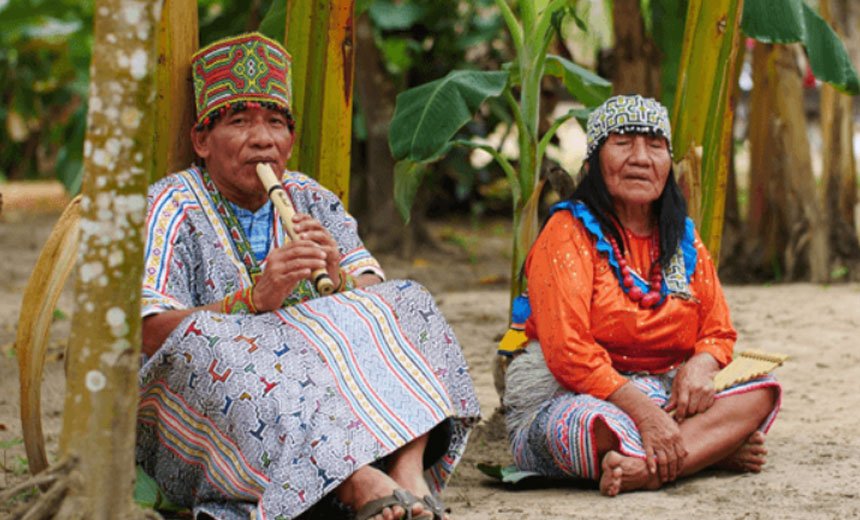Shamanic Visions: A Beginner’s Guide to Connecting with Nature’s Healing Energy.
Welcome to the captivating world of shamanism, where ancient wisdom and nature’s healing energy intertwine to create a powerful and transformative experience. In this beginner’s guide, we will explore the mystical realm of shamanism and uncover its secrets, helping you embark on a journey of self-discovery and spiritual connection.
Click here for upcoming Sacred Healing retreats.
Shamanism is an ancient practice that dates back thousands of years, rooted in indigenous cultures around the globe. It is a profound way of communing with the natural world and harnessing its healing powers. Whether you’re a curious explorer or someone seeking solace and balance in your life, this guide will introduce you to shamanism’s fundamental principles and practices.
From understanding the role of a shaman to learning how to connect with spiritual guides and tapping into the energy of sacred plants, get ready to unlock the door to a world where harmony and healing await. Join us as we delve into the wonders of shamanism and embark on a transformative journey toward self-discovery and spiritual awakening.

The History and Origins of Shamanism
Shamanism is an ancient practice that dates back thousands of years, rooted in indigenous cultures around the globe. It is a profound way of communing with the natural world and harnessing its healing powers. The origins of shamanism can be traced back to nomadic tribes who relied on the guidance of spiritual leaders to navigate the challenges of their existence.
In ancient times, shamans were revered as intermediaries between the physical and spiritual realms. They deeply understood the natural world and its interconnectedness with the human experience. Shamans were believed to be able to communicate with spirits, heal the sick, and provide guidance and wisdom to their communities.
Shamanic practices varied across different cultures, but they all shared a common thread of connecting with the spiritual realm to bring healing and balance. This ancient wisdom has been passed down through generations, and today, shamanism continues to be practiced and embraced by people seeking a deeper connection with themselves and the natural world.

Understanding the Core Beliefs of Shamanism
At the heart of shamanism lies a set of core beliefs that shape its philosophy and practices. One fundamental belief is the concept of animism, which is the belief that everything in the universe, from plants and animals to rocks and rivers, possesses a spiritual essence. Shamans believe that by connecting with these spirits, they can tap into their wisdom and healing energy.
Another core belief of shamanism is the interconnectedness of all living beings. Shamans see themselves as part of a vast web of life, where every action and decision has a ripple effect on the entire ecosystem. This understanding fosters a deep respect for the Earth and all its inhabitants, promoting harmony and balance in all aspects of life.
Shamans also believe in spiritual guides and helpers, often called power animals or spirit guides. These beings guide, protect, and support the shaman during their spiritual journey. Shamans cultivate relationships with these guides, forging a bond that allows them to access their wisdom and healing abilities.
Shamanic Practices and Rituals
Shamanic practices and rituals serve as gateways to the spiritual realm, allowing individuals to connect with the healing energy of nature. These practices often involve using drums, rattles, and other instruments to induce an altered state of consciousness. Through rhythmic beats and repetitive sounds, shamans enter a trance-like state where they can access higher realms of awareness.
One common practice in shamanism is journeying, where the shaman travels to different realms of consciousness to seek guidance or retrieve lost soul fragments. This practice involves meditating and allowing the spirit to guide the journey. It is a powerful tool for self-discovery and healing.
Another important aspect of shamanic rituals is the use of sacred plants. Plants such as Sacred Healing, peyote, and San Pedro cactus are known for their visionary properties and are used in shamanic ceremonies to facilitate spiritual experiences. These plant allies are believed to open the doors of perception, allowing individuals to connect with higher states of consciousness and gain insights into their lives.

Connecting with Nature in Shamanism
Nature is at the core of the shamanic practice, as it is seen as a powerful source of healing energy and wisdom. Shamans believe that by immersing themselves in nature, they can tap into its transformative powers and gain a deeper understanding of themselves and the world around them.
Spending time in natural environments, whether a forest, a beach, or a mountain, allows individuals to reconnect with the rhythms of the Earth and attune themselves to its energy. It is in these moments of stillness and solitude that profound spiritual experiences can occur.
Shamans also recognize the importance of developing a relationship with the elements of nature. Fire, water, air, and Earth are sacred forces holding immense power. Individuals can harness their energy for healing and transformation by honoring and connecting with these elements.
Exploring the Healing Energy of Shamanism
One of the primary goals of shamanism is healing, both on a physical and spiritual level. Shamans believe that many illnesses and imbalances are caused by a disconnection from the natural world and a loss of harmony within oneself.
Through various shamanic techniques, such as energy healing, soul retrieval, and extraction, shamans can restore balance and harmony to the individual. Energy healing involves channeling healing energy through the hands, clearing blockages, and restoring energy flow within the body.
Soul retrieval is another powerful healing technique used in shamanism. It is based on the belief that during traumatic experiences, a part of the individual’s soul may fragment and become lost. The shaman journeys to retrieve these lost soul fragments, reintegrating them into the individual’s being and restoring wholeness.
Extraction is a technique used to remove energetic blockages or intrusions from the body. Shamans believe these blockages can manifest as physical or emotional pain, and the individual can experience profound healing by removing them.
Shamanic Tools and Instruments
Shamans often employ various tools and instruments to aid their spiritual practices. One of the most commonly used instruments is the drum. The rhythmic beats of the drum help induce an altered state of consciousness, allowing the shaman to journey to different realms and connect with spiritual guides.
Rattles are another essential tool in shamanic practice. The rattles’ sound helps shift energy and create a sacred space for healing and ceremony. The shaman uses the rattle to clear stagnant energy and call upon the assistance of spiritual allies.
Other tools used in shamanism include feathers, stones, crystals, and incense. Feathers are seen as symbols of spiritual connection and are often used to cleanse and purify energy. Rocks and crystals hold unique energetic properties and can be used for healing, protection, and guidance. Incense is used to create a sacred atmosphere and invoke the presence of spiritual beings.
Finding a Shamanic Teacher or Guide
If you feel called to explore shamanism further, finding a shamanic teacher or guide can be a valuable step in your journey. A shamanic teacher can provide guidance, support, and instruction on shamanic practices and rituals. They can help you navigate the spiritual realms and deepen your connection with the natural world.
When searching for a shamanic teacher or guide, it is essential to trust your intuition and find someone who resonates with you on a deep level. Look for someone with a strong foundation in shamanic practices who embodies the core beliefs of shamanism and has a genuine passion for sharing their wisdom.
It is also crucial to approach shamanic teachers with respect and humility. Shamanism is a sacred practice, and honoring its traditions and teachings is essential. Remember that the path of shamanism is a personal journey, and each individual’s experience may differ.
Incorporating Shamanic Practices into Your Daily Life
Shamanic practices are not limited to ceremonial rituals or special occasions. They can be incorporated into your daily life, helping you stay connected to the healing energy of nature and maintaining balance and harmony within yourself.
Simple practices such as spending time in nature, practicing mindfulness, and connecting with the elements can profoundly impact your well-being. Take the time to observe the beauty around you, whether it’s a blooming flower or a flowing river. Allow yourself to be fully present in these moments and let nature’s healing energy wash over you.
You can also create your rituals and ceremonies to honor the cycles of nature and connect with the spiritual realm. Lighting a candle, praying, or meditating in a quiet space can help you cultivate a deeper connection with yourself and the world around you.

Common Misconceptions About Shamanism
As with any spiritual practice, shamanism has its fair share of misconceptions. One common misconception is that shamanism is synonymous with hallucinogenic substances and altered states of consciousness. While using sacred plants is a part of some shamanic traditions, it is not the sole focus of shamanism. Shamanism encompasses a wide range of practices and beliefs that go beyond plant medicines.
Another misconception is that shamanism is a primitive or outdated practice. In reality, shamanism is a living tradition that continues to evolve and adapt to the needs of the modern world. It offers valuable insights and tools for self-discovery, healing, and spiritual growth.
It is also important to note that shamanism is not a quick fix or a magical solution to all problems. It is a lifelong journey that requires dedication, commitment, and personal responsibility. The path of shamanism is one of self-discovery and self-empowerment, where individuals are encouraged to take an active role in their healing and growth.
Conclusion: Embracing the Shamanic Path: A Journey of Self-Discovery and Spiritual Awakening
Shamanism offers a profound and transformative path for those seeking a deeper connection with themselves and the natural world. By embracing the wisdom of ancient traditions and tapping into the healing energy of nature, individuals can embark on a journey of self-discovery and spiritual awakening.
Through journeying, connecting with nature, and working with spiritual guides, shamanism provides a gateway to higher realms of consciousness and a deeper understanding of the interconnectedness of all life.
As you explore the wonders of shamanism, remember to approach it with respect, humility, and an open heart. Allow the healing energy of nature to guide you on your journey, and may you find solace, balance, and harmony in the captivating world of shamanism.
Useful links-
Enlightenment Awaits Ome’s Premier Sacred Healing Retreat in the USA. Learn more.
Explore OME’s Spiritual Healing & Sacred Healing Retreats in California. Learn more.
Welcome to OME’s Spiritual Healing & Sacred Healing Retreats in Georgia. Learn more.
Discover OME’s Sacred Healing Retreats in Atlanta, GA. Learn more.
Join Our Sacred Healing Retreats in Texas. Learn more.
Join Our Sacred Healing Retreats in Florida. Learn more.


